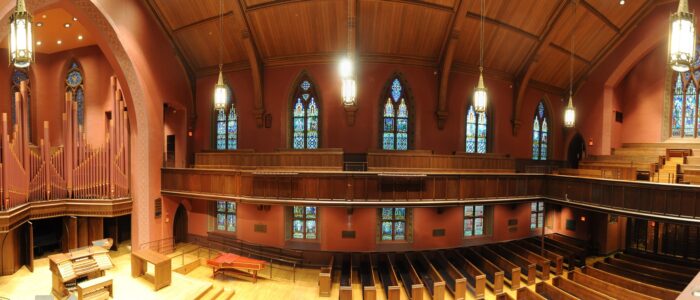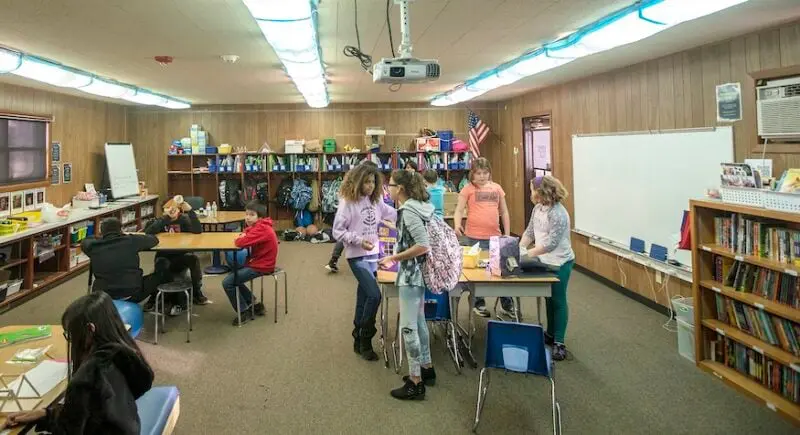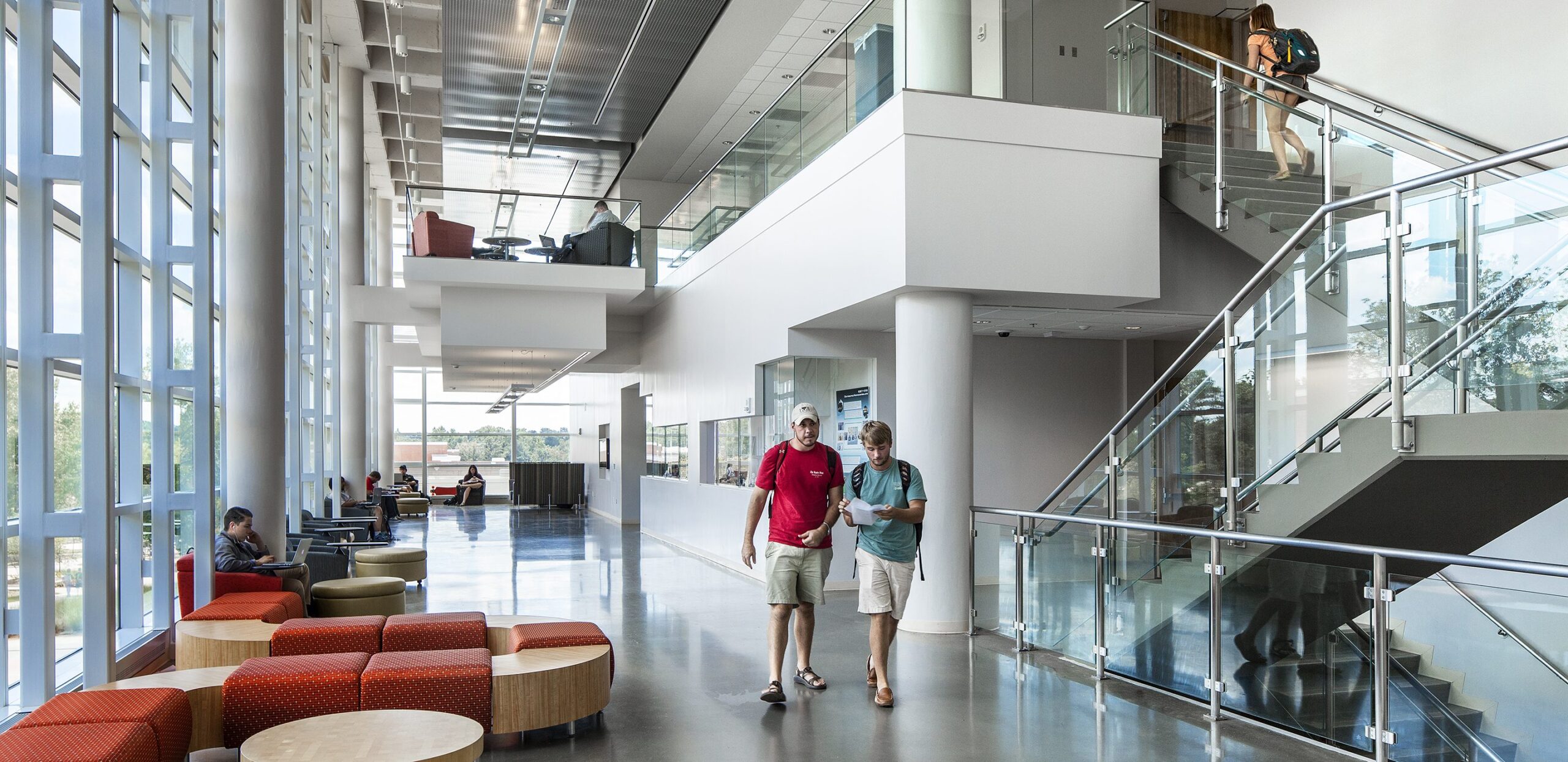Category Archives: Architectural/Hammurabi
- Home
- Archive by category "Architectural/Hammurabi" (Page 5)

Building Environment Design
I don’t build in order to have clients.
I have clients in order to build.
— Ayn Rand
“Détruire est facile ; construire est difficile.”
— Victor Hugo
The highest level of standardization for the building interiors on the emergent #SmartCampus originates in ISO TC 205 — Building Environment Design. This committee is charged with standards setting in the design of new buildings and retrofit of existing buildings for acceptable indoor environment and practicable energy conservation and efficiency. Building environment design addresses the technical building systems and related architectural aspects, and includes the related design processes, design methods, design outcomes, and design-phase building commissioning. Indoor environment includes air quality, and thermal, acoustic, and visual factors. The business plan is linked below:
STRATEGIC BUSINESS PLAN ISO/TC 205
Some of the key ideas in the scope of this project are listed below:
– the design of energy-efficient buildings
– building control systems design
– indoor air quality
– indoor thermal environment
– indoor acoustical environment
– indoor visual environment
– radiant heating and cooling systems
– heating and cooling systems
– building commissioning planning
– moisture in buildings
We see many of the foregoing ideas in the catalog of ASHRAE International — ANSI’s US Technical Advisory Group Administrator in this project, as well as a number of others (CLICK HERE). There are 31 Participating member and 28 Observing member nations.
Generally speaking, ISO consensus products are performance standards and contrast sharply with prescriptive standards in the energy-related domains in the United States. Prescriptive standards are easy to enforce but difficult to write. Performance standards are easy to write but difficult to enforce.
Facility managers that oversee building automation units in education communities in the United States are encouraged to participate in the development of ISO 205 by communicating directly with Brian Cox at ASHRAE (bcox@ashrae.org). We keep all ISO standards on the standing agenda of our periodic Global and AEdificare standards colloquia. We also maintain this committee’s catalog on the standing agenda of our Mechanical colloquium. See our CALENDAR for the next online meetings; open to everyone.





Issue: [10-30]
Category: International, Mechanical, Energy, Facility Asset Management
Colleagues: Mike Anthony, Richard Robben, Larry Spielvogel
More
Stata Center
Financials and Endowment 2024: Investments returned 8.9 percent 2024; endowment $24.6 billion
Named after its major donor — co-founder of Analog Devices — this Frank Gehry designed holds the top spot for highest absolute cost per square foot of any US university research — just shy of $500 million in today’s dollars.
The project replaced a “temporary” structure from World War II known for fostering innovation, particularly through the MIT Radiation Laboratory. The new center was intended to continue this legacy by housing the Computer Science and Artificial Intelligence Laboratory (CSAIL), the Laboratory for Information and Decision Systems (LIDS), and the Department of Linguistics and Philosophy, while promoting interdisciplinary collaboration through its innovative design.
Bird’s-eye view of campus from the Stata Center. #aroundMIT pic.twitter.com/so7euTqtX5
— Massachusetts Institute of Technology (MIT) (@MIT) May 23, 2017
The donations were driven by MIT’s goal to consolidate its computer science, electrical engineering, and artificial intelligence departments into a state-of-the-art facility to encourage the exchange of ideas and technology. The project, completed in 2004, faced challenges, including cost overruns and a subsequent lawsuit against Gehry and contractor Skanska USA for alleged design and construction flaws, such as leaks and drainage issues. This lawsuit was amicably resolved in 2010. Despite these issues, the Stata Center remains a landmark of MIT’s campus, celebrated for its bold architecture and role in fostering innovation.
Inside MIT CSAIL’s Stata Center. pic.twitter.com/XSvA9CgSdy
— MIT CSAIL (@MIT_CSAIL) April 11, 2024
Other major contributors:
- Bill Gates, who donated $20 million through the William H. Gates Foundation, resulting in one of the center’s towers being named the Gates Tower.
- Alexander W. Dreyfoos Jr. (MIT class of 1954), who gave $15 million, leading to the naming of the Dreyfoos Tower.
- Morris Chang of TSMC and Charles Thomas “E.B.” Pritchard Hintze (an MIT graduate associated with JD Edwards, now Oracle), who also provided significant funds.
- Steven Kirsch, founder of Infoseek, who contributed $2.5 million specifically for the construction of the center’s auditorium.
Indoor Air Quality Design Tools for Schools
From a school district’s perspective, the two advantages of portable classrooms are low initial cost and short time between specification and occupancy. They are intended to provide flexibility to school districts, enabling quick response to demographic changes and providing the ability to be moved from one school to another as demographics change. In reality, portable classrooms are seldom moved and become permanent fixtures of the school.
A Modular Control Lab Equipment and Virtual Simulations for Engineering Education
A Modular Control Lab Equipment and Virtual Simulations for Engineering Education
Vanessa Young, et. al | Kennesaw State University Department of Mechanical Engineering
Abstract: Hands-on experiences in engineering education are highly valued by students. However, the high cost, large size, and non-portable nature of commercially available laboratory equipment often confine these experiences to lab courses, separating practical demonstrations from classroom teaching. Consequently, mechanical engineering students may experience a delay in practical engagement as lab sessions typically follow theoretical courses in subsequent semesters, a sequence that differs from mechatronics, electrical, and computer engineering programs. This study details the design and development of portable and cost-effective control lab equipment that enables in-class demonstrations of a proportional-integral-derivative (PID) controller for the trajectory and speed control of a DC motor using MATLAB Simulink, as well as disturbance control. The equipment, composed of a DC motor, beam, gears, crank, a mass, and propellers, introduces disturbances using either propellers or a rotating unbalanced mass. All parts of the equipment are 3D printed from polylactic acid (PLA). Furthermore, the beam holding the propellers can be attached to Quanser Qube lab equipment, which is widely used in control laboratories. The lab equipment we present is adaptable for demonstrations, classroom projects, or as an integral part of lab activities in various engineering disciplines.
American Vitruvius
Robert A. M. Stern is an American architect, educator, and author known for his contributions to the field of architecture, urbanism, and design. Stern has been particularly influential in shaping the aesthetics of educational campuses through his architectural practice and academic involvement. Here are some key aspects of his approach to the aesthetics of educational campuses that attract philanthropic legacies:
- Pedagogical Ideals:
- Stern’s designs for educational campuses often reflect his understanding of pedagogical ideals. He considers the spatial organization and layout of buildings in relation to the educational mission of the institution.
- Spaces are designed to foster a sense of community, encourage interaction, and support the overall educational experience.
- Traditional and Classical Influences:
- Stern is known for his commitment to classical and traditional architectural styles. He often draws inspiration from historical architectural forms and traditional design principles.
- His work reflects a belief in the enduring value of classical architecture and its ability to create a sense of timelessness and continuity.
- Contextual Design:
- Stern emphasizes the importance of contextual design, taking into consideration the existing architectural context and the cultural or historical characteristics of the surrounding area.
- When designing educational campuses, he often seeks to integrate new buildings harmoniously into the existing campus fabric.
- Attention to Detail:
- Stern is known for his meticulous attention to detail. His designs often feature carefully crafted elements, including ornamental details, materials, and proportions.
- This focus on detail contributes to the creation of visually rich and aesthetically pleasing environments.
- Adaptation of Historical Forms:
- While Stern’s work is firmly rooted in traditional and classical architecture, he also demonstrates an ability to adapt historical forms to contemporary needs. His designs often feature a synthesis of timeless architectural elements with modern functionality.
Cambridge Center for Smart Infrastructure & Construction
“No village or individual shall be compelled to make bridges at river banks,
except those who from of old are legally bound to do so.”
— Magna Cara Clause 23 (Limiting forced labor for infrastructure)

“Clare Hall and King’s College Chapel, Cambridge, from the Banks of the River Cam” / Joseph Mallord William Turner (1793)
Smart Infrastructure: Getting More From Strategic Assets
Dr Jennifer Schooling, Director of CSIC
Dr Ajith Parlikad, CSIC Co-Investigator and Senior Lecturer
Mark Enzer, Global Water Sector Leader
Mott MacDonald; Keith Bowers, Principal Tunnel Engineer, London Underground
Ross Dentten, Asset Information and Configuration Manager, Crossrail
Matt Edwards, Asset Maintenance and Information Manager, Anglian Water Services
Jerry England, Group Digital Railway Director, Network Rail
Volker Buscher, Director, Arup Digital
Smart Infrastructure is a global opportunity worth £2trn-4.8trn. The world is experiencing a fourth industrial revolution due to the rapid development of technologies and digital abundance.
Smart Infrastructure involves applying this to economic infrastructure for the benefit of all stakeholders. It will allow owners and operators to get more out of what they already have, increasing capacity, efficiency and resilience and improving services.
It brings better performance at lower cost. Gaining more from existing assets is the key to enhancing service provision despite constrained finance and growing resource scarcity. It will often be more cost-effective to add to the overall value of mature infrastructure via digital enhancements than by physical enhancements – physical enhancements add `more of the same’, whereas digital enhancements can transform the existing as well.
Smart Infrastructure will shape a better future. Greater understanding of the performance of our infrastructure will allow new infrastructure to be designed and delivered more efficiently and to provide better whole-life value.
Data is the key – the ownership of it and the ability to understand and act on it. Industry, organisations and professionals need to be ready to adjust in order to take advantage of the emerging opportunities. Early adopters stand to gain the most benefit. Everyone in the infrastructure sector has a choice as to how fast they respond to the changes that Smart Infrastructure will bring. But everyone will be affected.
Change is inevitable. Progress is optional. Now is the time for the infrastructure industry to choose to be Smart.
LEARN MORE:
Cambridge Centre for Smart Infrastructure and Construction
Perspective: Since this paper is general in its recommendations, we provide examples of specific campus infrastructure data points that are difficult, if not impossible, to identify and “make smart” — either willfully, for lack of funding, for lack of consensus, for lack of understanding or leadership:
-
- Maintenance of the digital location of fire dampers in legacy buildings or even new buildings mapped with BIM. Doors and ceiling plenums are continually being modified and the As-Built information is usually not accurate. This leads to fire hazard and complicates air flow and assuring occupant temperature preferences (i.e. uncontrollable hot and cold spots)
- Ampere readings of feeder breakers downstream from the electric service main. The power chain between the service substation and the end-use equipment is a “no-man’s land” in research facilities that everyone wants to meter but few ever recover the cost of the additional metering.
- Optimal air flow rates in hospitals and commercial kitchens that satisfies both environmental air hazards and compartmentalized air pressure zones for fire safety.
- Identification of students, staff and faculty directly affiliated with the campus versus visitors to the campus.
- Standpipe pressure variations in municipal water systems
- Pinch points in municipal sewer systems in order to avoid building flooding.
- How much of university data center cost should be a shared (gateway) cost, and how much should be charged to individual academic and business units?
- Should “net-zero” energy buildings be charged for power generated at the university central heating and electric generation plant?
- How much staff parking should be allocated to academic faculty versus staff that supports the healthcare delivery enterprises; which in many cases provides more revenue to the university than the academic units?
- Finally, a classical conundrum in facility management spreadsheets: Can we distinguish between maintenance cost (which should be covered under an O&M budget) and capital improvement cost (which can be financed by investors)
Places of Worship
“The Church is not a gallery for the exhibition of eminent Christians,
but a school for the education of imperfect ones.”
— Henry Ward Beecher
WEBCAST Committee Action Hearings, Group A #2
2024 International Building Code: Chapter 3 Occupancy Classification and Use
In the International Code Council catalog of best practice literature we find the first principles for safety in places of worship tracking in the following sections of the International Building Code (IBC):
“303.1.4: Accessory religious educational rooms and religious auditoriums with occupant loads less than 100 per room or space are not considered separate occupancies.” This informs how fire protection systems are designed.
Section 305 Educational Group E
“305.2.1: Rooms and spaces within places of worship proving such day care during religious functions shall be classified as part of the primary occupancy.” This group includes building and structures or portions thereof occupied by more than five children older than 2-1/2 years of age who receive educational, supervision or personal care services for fewer than 24 hours per day.
Section 308 Institutional Group I
“308.5.2: Rooms and spaces within places of religious worship providing [Group I-4 Day Care Facilities] during religious functions shall be classified as part of the primary occupancy. When [Group I-4 Day Care Facilities] includes buildings and structures occupied by more than five persons of any age who receive custodial care for fewer than 24 hours per day by persons other than parents or guardians, relatives by blood, marriage or adoption, and in a place other than the home of the person cared for.
Tricky stuff — and we haven’t even included conditions under which university-affiliated places of worship may expected to be used as community storm shelters.















2024/2025/2026 ICC CODE DEVELOPMENT SCHEDULE
Public response to Committee Actions taken in Orlando in April will be received until July 8th.
Because standard development tends to be a backward-looking domain it is enlightening to understand the concepts in play in previous editions. The complete monograph of proposals for new building safety concepts for places of worship for the current revision cycle is linked below:
2021/2022 Code Development: Group B
A simple search on the word “worship” will reveal what ideas are in play. With the Group B Public Comment Hearings now complete ICC administered committees are now curating the results for the Online Governmental Consensus Vote milestone in the ICC process that was completed December 6th. Status reports are linked below:
2018/2019 Code Development: Group B
Note that a number of proposals that passed the governmental vote are being challenged by a number of stakeholders in a follow-on appeals process:
A quick review of the appeals statements reveals some concern over process, administration and technical matters but none of them directly affect how leading practice for places of worship is asserted.
We are happy to get down in the weeds with facility professionals on other technical issues regarding other occupancy classes that are present in educational communities. See our CALENDAR for next Construction (Ædificare) colloquium open to everyone.
Issue: [17-353]
Category: Chapels
Colleagues: Mike Anthony, Jack Janveja, Richard Robben, Larry Spielvogel
More
Religion is a culture of faith; science is a culture of doubt. pic.twitter.com/H6dgJ5DnSC
— Prof. Feynman (@ProfFeynman) October 8, 2023
Building Structural Maintenance
Key Codes and Standards:
International Building Code (IBC): Widely used in the United States and other regions, the IBC sets minimum requirements for structural design, materials, and maintenance to ensure safety and performance. It references standards like ASCE 7 (Minimum Design Loads and Associated Criteria for Buildings and Other Structures) for load calculations (e.g., wind, seismic, snow).Maintenance provisions require regular inspections and repairs to address issues like cracking or deterioration.
ACI 318 (Building Code Requirements for Structural Concrete): Published by the American Concrete Institute this standard governs the design and construction of concrete structures.Includes requirements to control cracking (e.g., reinforcement detailing, concrete mix design) and ensure durability under environmental exposure.Maintenance guidelines recommend periodic inspections for cracks, spalling, or reinforcement corrosion.
AISC 360 (Specification for Structural Steel Buildings): Published by the American Institute of Steel Construction, this standard covers the design, fabrication, and erection of steel structures. Addresses fatigue, connection design, and corrosion protection to prevent structural failure. Maintenance involves inspecting for issues like weld imperfections or coating degradation.
-
ACI 562 (Assessment, Repair, and Rehabilitation of Existing Concrete Structures):
-
Provides a framework for evaluating and repairing concrete structures to address cracking, spalling, or other damage.
-
Emphasizes regular inspections and timely repairs to maintain structural integrity.
-
-
NACE/SP0108 (Corrosion Control of Offshore Structures):
-
Covers maintenance practices to prevent corrosion-related failures in steel structures.
-
-
ASTM E2270 (Standard Practice for Periodic Inspection of Building Facades):
-
Outlines procedures for inspecting facades to identify cracking, water infiltration, or other issues that could lead to structural problems.
-
IEEE: Structural Health Monitoring system based on strain gauge enabled wireless sensor nodes
Unified Facilities Criteria
Our interest lies in the built environment for higher education students seeking careers in the military. Many marquee colleges and universities are, at best, ambivalent about the presence of the military in their educational settlements. Alas, that is a discussion for another organization; not ours.
We list a few pros and five cons regarding how the National Institute of Building Sciences (NIBS) may support our primary mission this industry, based on its alignment with the National Clearinghouse for Educational Facilities (NCEF) and the National Center on School Infrastructure (NCSI).
Pros
-
Comprehensive Resource Hub via NCEF: NIBS manages the National Clearinghouse for Educational Facilities (NCEF), established by the U.S. Department of Education in 1997, which serves as a vital resource for school administrators, facility managers, designers, and researchers. It provides free access to news, events, data, and statistics on school facilities planning, design, funding, construction, and maintenance, enabling stakeholders to make informed decisions for safe, healthy, and high-performing educational environments.
-
Advocacy for Safe and Sustainable Schools: Through the National Center on School Infrastructure (NCSI), NIBS collaborates with partners to provide technical assistance and training to state and local educational agencies. This initiative focuses on improving public school infrastructure to ensure health, safety, sustainability, and equity, helping schools address challenges like aging facilities and climate resilience.
-
Development of Standards and Guidelines: NIBS develops criteria, guidelines, and best practices recognized by organizations like the American Institute of Architects (AIA) and the International Code Council (ICC). These resources can guide the construction and renovation of educational facilities to meet high-performance standards, ensuring durability, energy efficiency, and safety.
-
Promotion of Digital Transformation: NIBS supports initiatives like the U.S. National BIM Program, which promotes digital transformation in designing, constructing, and operating educational facilities. Building Information Modeling (BIM) can streamline project management, reduce costs, and improve facility maintenance in schools.
-
Stakeholder Collaboration: NIBS brings together experts from government, industry, labor, and academia to address challenges in the built environment. This collaborative approach fosters innovative solutions tailored to educational facilities, such as resilient design to mitigate natural hazards, which is critical for protecting students and staff.
Cons
- Dependence on Funding and Membership: NIBS relies on a mix of public and private financing, including membership dues and grants. Budget constraints or shifts in funding priorities could limit the resources available for educational facility-specific programs like NCEF or NCSI, reducing their effectiveness.
-
Complexity of Implementation: The technical standards and guidelines developed by NIBS, such as those for BIM or resilience, may be complex and require significant expertise to implement. Smaller school districts with limited resources or technical know-how may struggle to adopt these advanced practices.
-
Potential for Slow Consensus-Building: NIBS emphasizes collaboration and consensus among diverse stakeholders, which can be time-consuming. This process may delay the development or implementation of solutions critical for addressing urgent needs in educational facilities, such as rapid repairs for aging infrastructure.
-
Limited Public Awareness: Despite its contributions, NIBS may not be widely known among local school administrators or facility managers. This lack of awareness could hinder the adoption of its resources, such as NCEF’s database or NCSI’s technical assistance, limiting their impact on the educational facilities industry.
NIBS offers significant benefits to the educational facilities industry through its resources, technical assistance, and collaborative approach, particularly via programs like NCEF and NCSI. However, its broad focus, funding dependencies, and the complexity of its solutions may pose challenges for widespread adoption, especially in under-resourced school districts. For more information on NIBS’s initiatives, visit nibs.org or explore specific programs like the NCSI at ed.gov.
George Guszcza and John Hughes, Hemson Consulting, shared strategic insights at @ricsamericas NYU-RICS Americas Conference 2025. They explored how NYC, NY State, and the federal government drive infrastructure and economic growth amid political uncertainty. #buildinginnovation pic.twitter.com/HunsxRJ5lZ
— National Institute of Building Sciences (@bldgsciences) May 7, 2025
Comment (MAA): A snarky slide title that implies that current policy is working. Uncertain policy means the American people are asking for change given US Debt; some of it accelerated by partisans of a large government and its handmaidens in academia.
New update alert! The 2022 update to the Trademark Assignment Dataset is now available online. Find 1.29 million trademark assignments, involving 2.28 million unique trademark properties issued by the USPTO between March 1952 and January 2023: https://t.co/njrDAbSpwB pic.twitter.com/GkAXrHoQ9T
— USPTO (@uspto) July 13, 2023
Standards Michigan Group, LLC
2723 South State Street | Suite 150
Ann Arbor, MI 48104 USA
888-746-3670

























